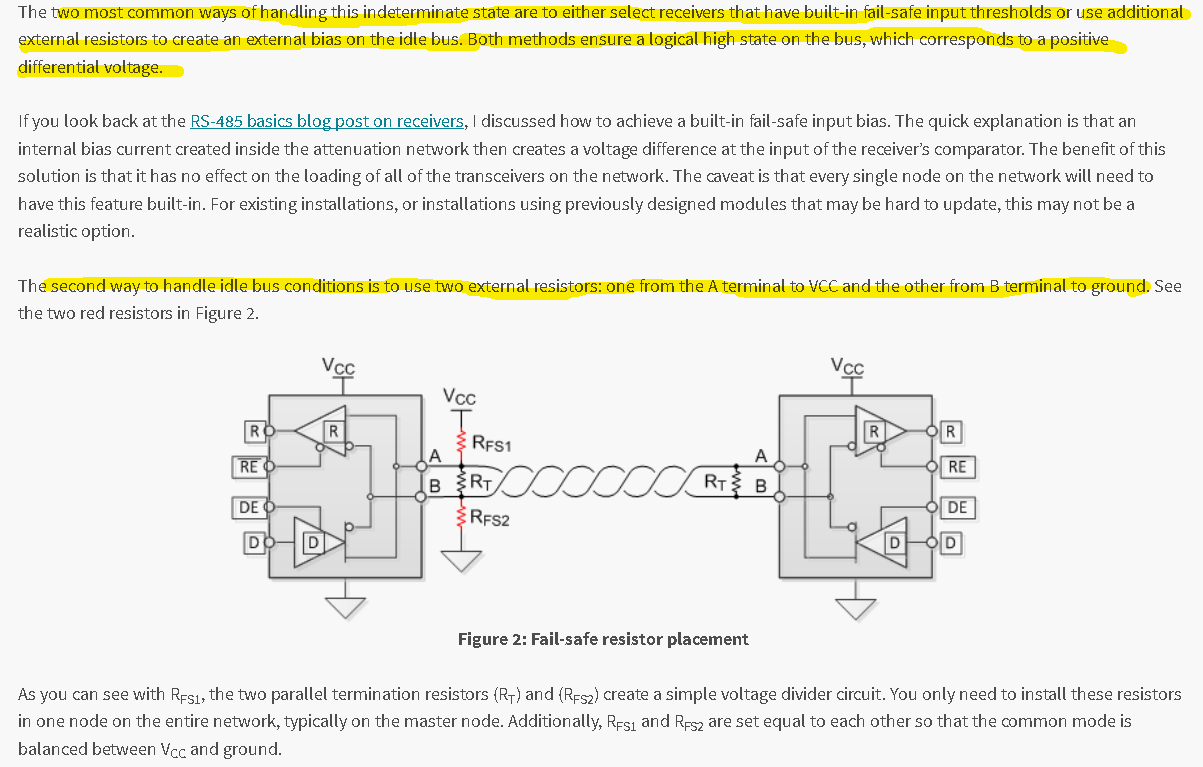Other Parts Discussed in Thread: THVD1419
Hi Sirs,
Sorry to bother you .
Below Fig.1 is our SN65LBC184D circuit.
We are confused on the resistance of failsafe resistors.
According to TI application report as Fig.2,
the failsafe resistors should be 600 ohm.
Can you please check it?
We would like to know how to read RS485 waveform as Fig.3?
Fig.1
SN65LBC184D circuit
Fig.2
application report from TI
Fig.3
RS485 waveform
Ch1: RS485+
Ch4: RS485-
CHM: CH1-CH4


